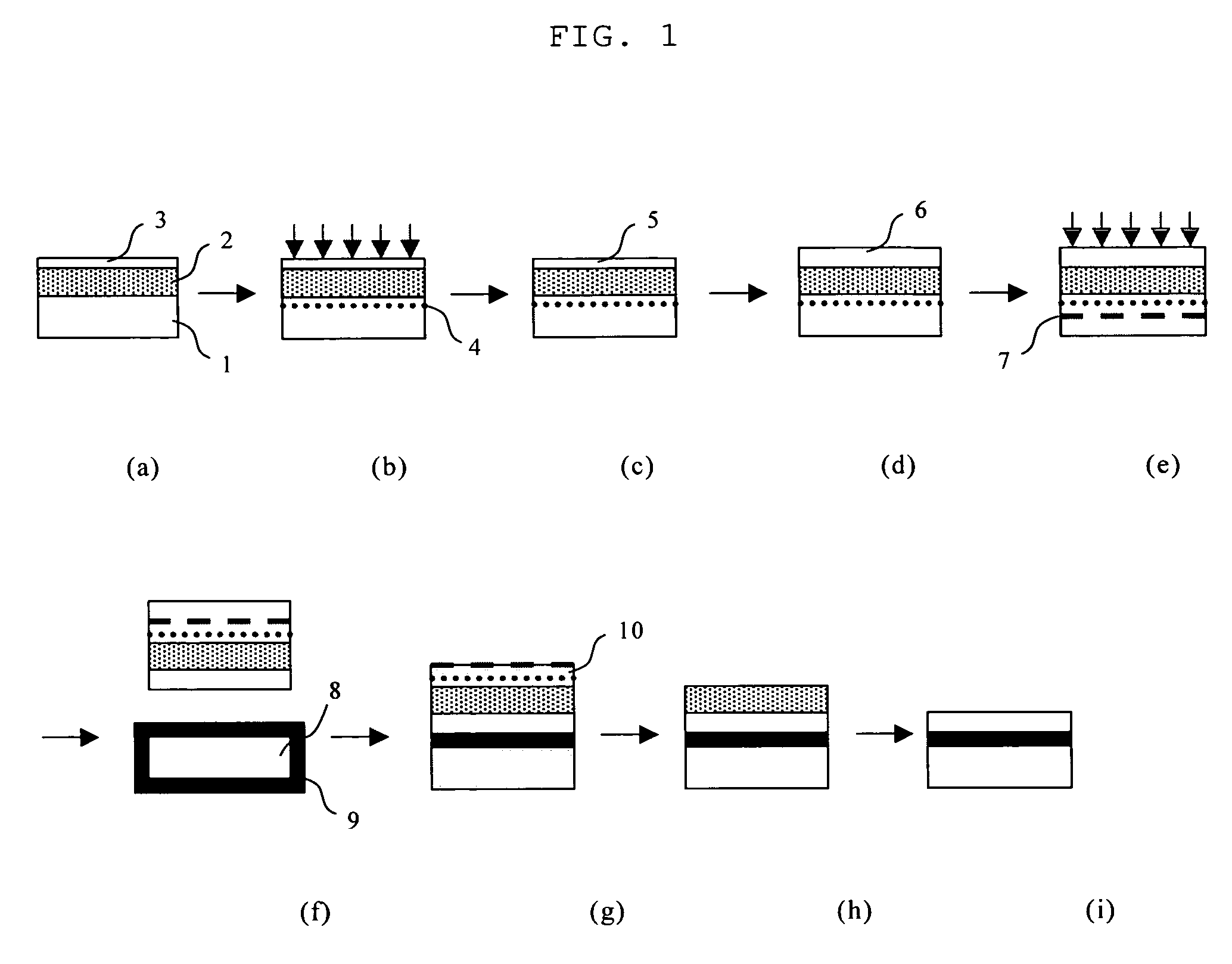Method for producing a semiconductor wafer
a technology of semiconductor wafers and semiconductor layers, applied in the direction of crystal growth process, polycrystalline material growth, chemically reactive gases, etc., can solve the problems of poor yield, high substrate cost, bubbles, cracks, etc., and achieve the effect of preventing dislocation, excess thickness, and preventing surface roughness
- Summary
- Abstract
- Description
- Claims
- Application Information
AI Technical Summary
Benefits of technology
Problems solved by technology
Method used
Image
Examples
experiment 1
[0032] Accordingly, the present inventors produced wafers (samples 1 to 3) which were formed with a Si1-XGeX layer and a strained Si layer on a silicon single crystal wafer using the method described above. For investigating the properties thereof, a relaxation rate of each of the Si1-XGeX layers were measured by a micro-Raman measurement method. The measurement was performed using RS-3000 manufactured by HORIBA Ltd., an apparatus using a micro-Raman method. Here, a relaxation rate is the amount relatively represented by a degree of lattice relaxation, where the rate is 0% in the case that a lattice constant of the Si1-XGeX layers is the same with that of Si and the rate is 100% in the case of the inherent lattice constant determined by a Ge concentration. Production conditions of the wafers and measurement results is shown in Table 1. In addition, in each of the samples, the Si1-XGeX layer was set to be X=0.2, the dose amount of hydrogen ions was set to be 3.0×1016 / cm2, a depositio...
experiment 2
[0035] Next, for investigating the relation of a thickness of a Si layer to which strain is introduced and a strain amount, by the same method with Experiment 1, wafers each having a Si layer with a different thickness were produced. As a bond wafer, each of the wafers was bonded to a base wafer and thereby there was produced SSOI wafers (Samples 4 to 6) as the same manner with the conventional method described above. A strain amount of the strained Si layer was measured by a micro-Raman measurement method. Here, a strain amount is the amount represented by how much a lattice constant of a strained Si layer is expanded or shrank against the lattice constant of Si. In the present specification, in the case of expanding the amount is a positive value. The results are shown in Table 2. In addition, in each of the samples, a thickness of the Si1-XGeX layer was 100 nm, the dose amount of hydrogen ions was set to be 3.0×1016 / cm2, and relaxing heat-treatment was performed at 900° C. for 7 ...
examples
[0063] Hereinafter, examples and comparative examples according to the present invention will be explained concretely. However, the present invention is not limited thereto. (Example 1, 2, Comparative Example 1, 2) According to the steps shown in FIG. 1, SSOI wafers were produced (Example 1, 2). Moreover, SSOI wafers were produced according to the steps as shown in FIG. 1 except for not performing a step of increasing a thickness of the strained Si layer (Comparative Example 1, 2). And, strain amounts of the strained Si layers of these SSOI wafers were measured. In addition, the measurements of the strain amounts were performed by using RS-3000 manufactured by HORIBA, Ltd., an apparatus using a micro-Raman method. Moreover, in Examples 1, 2, and Comparative Example 1, a thickness of the Si layer formed on the Si1-XGeX layer is set to be 10 nm, a critical film-thickness at a temperature of the relaxing heat-treatment (900° C.) or thinner, and in Comparative Example 2, 25 nm, the crit...
PUM
| Property | Measurement | Unit |
|---|---|---|
| thickness | aaaaa | aaaaa |
| temperature | aaaaa | aaaaa |
| temperature | aaaaa | aaaaa |
Abstract
Description
Claims
Application Information
 Login to View More
Login to View More - R&D
- Intellectual Property
- Life Sciences
- Materials
- Tech Scout
- Unparalleled Data Quality
- Higher Quality Content
- 60% Fewer Hallucinations
Browse by: Latest US Patents, China's latest patents, Technical Efficacy Thesaurus, Application Domain, Technology Topic, Popular Technical Reports.
© 2025 PatSnap. All rights reserved.Legal|Privacy policy|Modern Slavery Act Transparency Statement|Sitemap|About US| Contact US: help@patsnap.com


